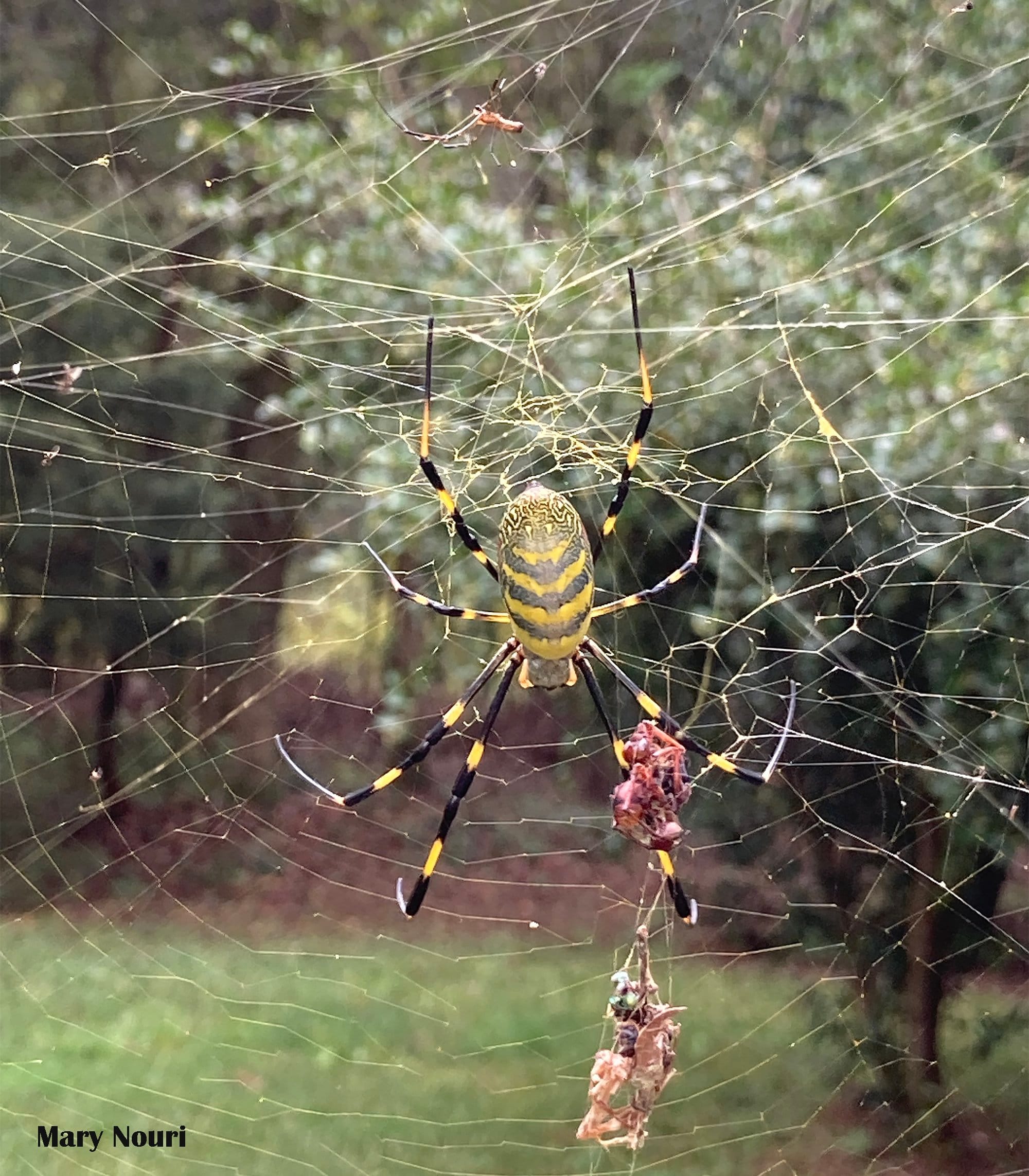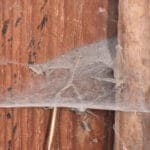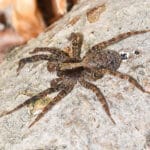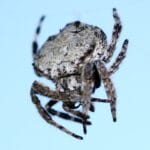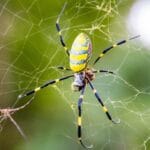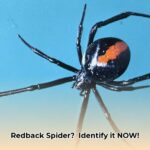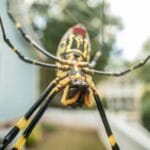Hey there, curious readers! Let’s dive into the world of the golden silk spider, a fascinating creature that spins webs of shimmering gold—well, not quite gold, but you’ll see what we mean. We’ll explore where these spiders hang out, what they eat, how they mate, and all the cool stuff about their silky webs. We’ll even bust some myths and learn about some awesome things scientists are discovering about these web-spinning wonders. Get ready to be amazed by the golden silk spider!
Nature’s Master Weaver
Have you ever stumbled upon a web shimmering like gold in the sunlight? You might have encountered the golden silk spider, a creature that truly lives up to its name. These fascinating arachnids, scientifically known as Trichonephila clavipes, are more than just eight-legged web spinners; they’re architects, engineers, and ecological superheroes all rolled into one.
Their webs aren’t just sticky traps; they’re masterpieces of design woven from shimmering, golden silk. Imagine a silken palace suspended between branches, designed to snare unsuspecting insects mid-flight. That’s the work of the golden silk spider. But their talents extend beyond web-building. These skilled predators play a vital role in keeping insect populations in check, acting as nature’s pest control and ensuring a healthy balance in their ecosystems.
What’s even more amazing is the potential hidden within their golden threads. Scientists are investigating the unique properties of golden silk spider silk for applications in medicine and technology. Imagine sutures that are both incredibly strong and biocompatible, or high-performance fabrics inspired by the spider’s weaving techniques. The possibilities are truly exciting.
Are Golden Silk Spiders Poisonous?
We’ve established that golden silk spiders, those impressive weavers of shimmering webs, do possess venom. But before you swear off ever venturing outdoors again, let’s put things into perspective. Their venom is specifically designed for tackling their next meal – think small insects, not large mammals like us! It’s strong enough to knock out a grasshopper, but for humans, its potency is often compared to a bee sting.
Now, nobody enjoys getting stung, but most people don’t consider bees a major threat, right? Golden silk spiders feel the same way about us! They’d much rather retreat or even play dead than waste their venom on something they can’t eat. Plus, their fangs are designed for piercing insect exoskeletons, not our much tougher skin.
You might hear folks mistaking them for banana spiders, which are bigger and can seem more intimidating. But remember, even if they look a little scary, golden silk spiders are more interested in spinning those incredible golden webs than picking a fight with you.
And speaking of those webs – they’re not just beautiful, they’re downright amazing! Scientists are currently researching how the silk’s incredible strength could be used in medicine, perhaps for things like rebuilding tissues or helping wounds heal faster. This special silk might even hold the key to new, super-strong materials for all sorts of uses.
So, bottom line? While it’s true that golden silk spiders are venomous, they’re not out to get us. These fascinating creatures are much more interested in catching their next meal and weaving their stunning webs, potentially contributing to some incredible scientific discoveries in the process!
Golden Silk Spider vs. Joro Spider: Spotting the Difference
You might see a big, beautiful spider spinning a web in your garden and think, “Wow, a golden silk spider!” But hold on – it could be a Joro spider. These two arachitects are often mistaken for each other, and it’s easy to see why. Both spin impressive, large webs and sport vibrant colors. However, some key differences can help you tell them apart.
Think of it this way: if spiders wore socks, the golden silk spider would be sporting fuzzy leg warmers! They have those distinctive hairy legs, while the Joro spider prefers a sleek, hairless look.
Color can also give you a clue, though it can be a bit tricky. Golden silk spiders usually have a more subdued orange on their backs, dotted with yellow markings, kind of like a gentle sunset. Joro spiders, on the other hand, can be real show-offs. The males are usually a bright, sunny yellow, while the females rock a more brownish-yellow outfit with striking black and red bands on their legs.
Their webs are another way to tell these two apart. Both build large webs, but the Joro spider takes things to another level. Their webs are enormous and complex, often spanning several feet and consisting of multiple layers. They look like they were designed by a skilled engineer! Golden silk spiders, while still impressive web architects, tend to stick to the classic orb shape.
Then there’s the question of where you live. If you’re in the southeastern United States, you might encounter both of these fascinating creatures. The golden silk spider is a native, a long-time resident of the area. But the Joro spider is a relative newcomer, an invasive species originally hailing from East Asia. Researchers are still studying how these newcomers might be affecting local ecosystems.
Here’s a handy table summarizing the key differences:
| Feature | Golden Silk Spider | Joro Spider |
|---|---|---|
| Appearance | Dull orange with yellow spots, hairy legs | Bright yellow or brown, hairless legs |
| Web Construction | Classic, orb-shaped webs | Massive, multi-layered webs |
| Geographic Distribution | Native to the southeastern US | Invasive to the southeastern US |
So, the next time you come across a large, web-spinning spider, take a closer look. Is it a golden silk spider with its fuzzy leg warmers, or a Joro spider with its sleek legs and penchant for massive webs? Either way, you’ve encountered a fascinating creature that plays an important role in its ecosystem. There’s still much to learn about these amazing spiders, and ongoing research continues to unravel their secrets.
Golden Silk Spiders in Florida: How Big Do They Get?
We’ve already talked a bit about golden silk spiders, but let’s dive into what really makes them stand out: their size! These spiders, scientifically known as Trichonephila clavipes, are truly a sight to behold, especially the females. But just how big do they get in Florida?
Well, imagine holding a baseball in your hand. That’s about the size of a fully grown female golden silk spider, body alone! From one leg tip to another, they can stretch out to a whopping 4 inches, almost as wide as an adult’s hand. That’s definitely bigger than your average house spider! The males, however, are much smaller, only about an inch long. Talk about a size difference!
Now, you might be thinking, “A spider that big sounds scary!” But surprisingly, golden silk spiders are known for being quite gentle. They’d much rather hang out in their webs, which, by the way, are just as impressive as their size. These webs can get massive, sometimes stretching over 3 feet across! And they’re not just big; they’re beautiful too, with a unique golden sheen that gives the spiders their name.
You’re likely to spot these impressive spiders all over Florida, especially in warm, humid places like forests and gardens. They love areas with lots of plants, which makes sense considering their webs are like high-rise apartments for insects! Speaking of insects, that’s what these spiders love to eat. Their webs are like giant sticky traps, perfectly designed to catch unsuspecting flies and other flying insects.
While a large spider might make some people nervous, golden silk spiders are truly fascinating creatures. They’re a vital part of our ecosystem, keeping those pesky insect populations in check. Plus, their silk is incredibly strong and has even been studied for its potential use in things like bulletproof vests! So, the next time you see one of these gentle giants, take a moment to appreciate their unique beauty and the important role they play in our world.
Did you know that ham the chimp was the first hominid launched into space? Also, the hawaiian mongoose is an invasive species that was introduced to the islands in the 1880s to control rats.
- SYBAU See You Baby Meaning: Gen Z Slang Evolves - July 1, 2025
- Unlock Your Inner Youth: Lifestyle Secrets for a Vibrant Life - July 1, 2025
- Decode SYBAU Meaning: Gen Z Slang Explained - July 1, 2025
